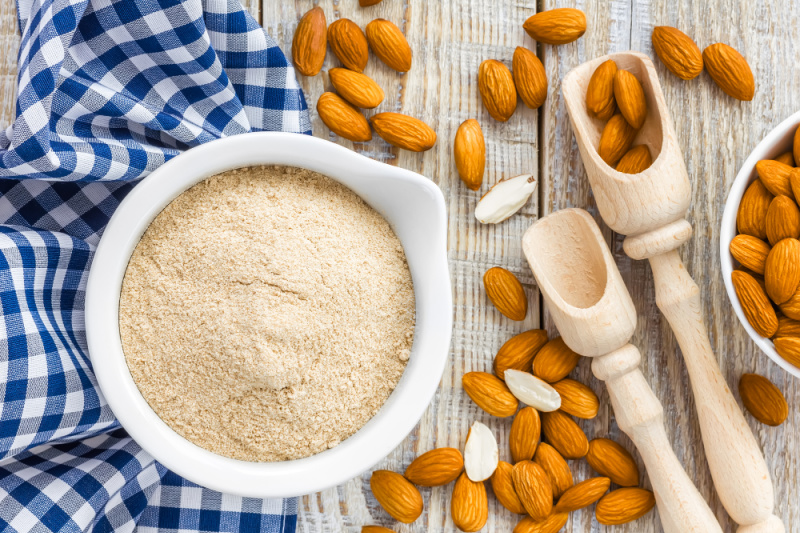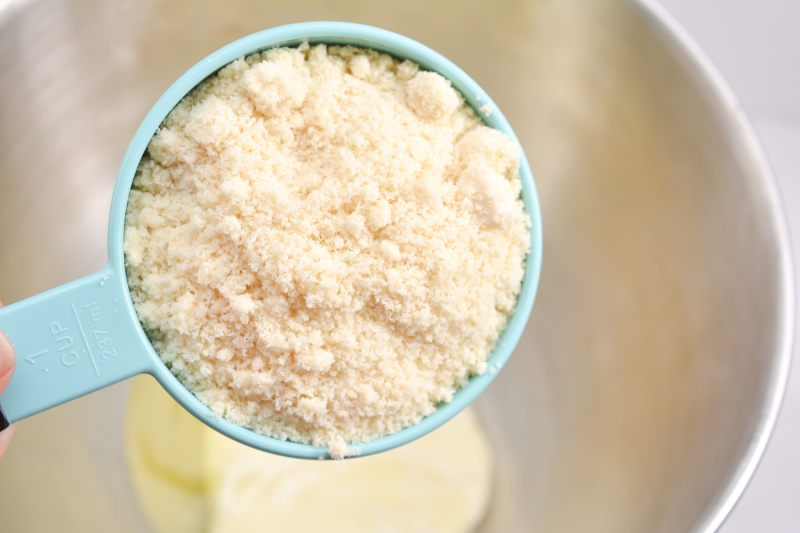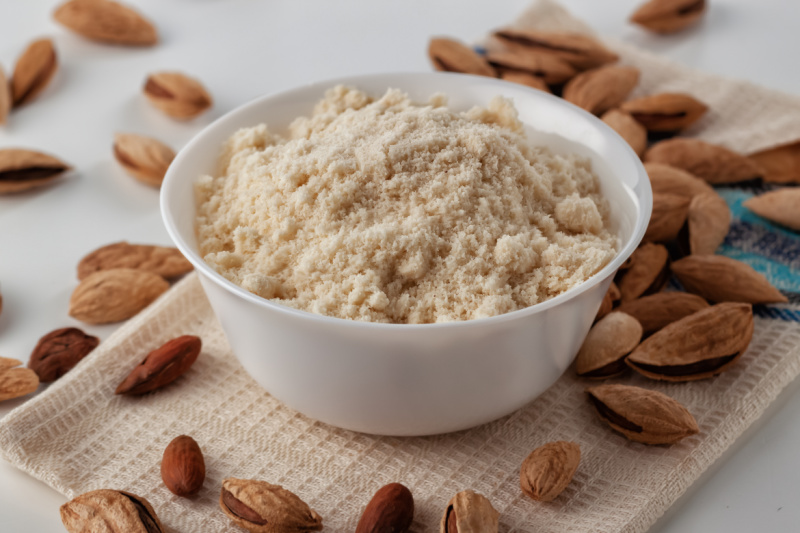What is blanched almond flour? Learn more about blanched vs unblanched almond flour and why it’s called that.
Posts may be sponsored. This post contains affiliate links, which means I will make a commission at no extra cost to you should you click through and make a purchase. As an Amazon Associate I earn from qualifying purchases.

What is Unblanched Almond Flour?
Keto dieters often turn to almond flour for baked goods because it is slightly sweeter than other low-carb flours. There are many nutritional benefits to this gluten-free flour.
If you follow the keto or low-carb diet, you will probably avoid things made with wheat flour.
Traditional whole grain flours have an impact on your blood sugar. The ketogenic diet typically doesn’t allow for them for this reason.
Almonds have many health benefits and low net carbs compared to regular flour. They can be used in baking or savory dishes.
What is almond flour?
Almond flour is a gluten-free alternative to wheat flour made from finely ground blanched almonds. It is often used in baking as it gives baked goods a moist texture.
What is the difference between blanched and unblanched almond flour?
The main difference between blanched and unblanched almond flour is that blanched almond flour is made from almonds with the skin removed, while unblanched almond flour is made from whole almonds with the skin left on.
Blanched almond flour is lighter in color and has a more delicate texture than unblanched almond flour. It is also more expensive than unblanched almond flour.
Unblanched almond flour has a nuttier flavor than blanched almond flour. It is also denser and may not be suitable for some recipes that call for blanched almond flour.
So, what is the best type of almond flour to use? It depends on your preferences and what you are making. Blanched almond flour is the way to go if you are looking for a light and fluffy texture. Unblanched almond flour is the better choice if you want a more hearty flavor.
Either way, both types of almond flour are healthy keto-friendly options.

What is Blanched Almond Flour?
Blanched almond flour is made from almonds that have had the skin removed. The skins of almonds can contain bitter flavonoids, so blanching them removes this bitterness.
The almonds are first peeled and then ground into fine flour. Blanched almond flour is lighter in color and has a more delicate texture than unblanched almond flour. It is also more expensive than unblanched almond flour.
Why is it called blanched almond flour?
The word blanched in this context means to remove the skin. So, with the skin removed, blanched almond flour is made from raw almonds.
It is considered blanched because the skin is removed.
Is Blanched Almond Flour Keto?
Yes, blanched almond flour is a keto-friendly flour option. It is lower in carbs than traditional wheat flour and has a higher fat content. This makes it a great flour to use for keto baking.

What are the benefits of Blanched Almond Flour?
The main benefit of blanched almond flour is its lighter texture and flavor than unblanched. This makes it ideal for baking cakes, cookies, and other delicacies with a desired light and fluffy texture.
Another benefit of blanched almond flour is that it is less likely to cause digestive issues than unblanched almond flour. This is because the skins of the almonds can contain compounds that irritate the gut.
Blanched almond flour is an excellent option for a low-carb or ketogenic diet. It is also suitable for people with gluten intolerance or celiac disease.
What are the disadvantages of Blanched Almond Flour?
One downside of blanched almond flour is that it is more expensive than unblanched almond flour. Another potential downside is that it can be harder to find in stores.
Blanched almond flour may not be the best choice if you are looking for a more hearty flavor. The light and fluffy texture of this flour can also be a disadvantage if you make something that should be dense, like a loaf of bread.

What is Unblanched Almond Flour?
Unblanched almond flour is made from whole almonds with the skin left on.
The almonds are ground into a coarse meal and then into fine flour. Unblanched almond flour is denser than blanched almond flour and has a nuttier flavor.
What is almond meal?
Almond meal is a coarsely ground flour made from almonds with the skin left on. It has a coarser texture than almond flour and is less expensive.
Why is it called almond meal? Almond meal is called almond meal because it is made from almonds that have been ground into a meal or flour. The word “meal” refers to the coarse texture of the flour.
How do you make blanched almonds?
To blanch almonds, first, soak them in boiling water for a few minutes. Then, remove them from the water and peel off the skins.
Finally, grind the almonds into fine flour. You will need a food processor or high-speed blender.
Can you one to one replace almond flour with wheat flour?
No, almond flour cannot be used one-to-one instead of wheat flour. Wheat flour is a type of flour that contains gluten, which gives it a higher protein content and makes it more elastic. This makes it better for baking bread and other items with a desired chewy texture. Almond flour does not contain gluten and will not produce the same results.
When baking with almond flour, it is essential to use recipes specifically designed for this flour. You may also need to make adjustments, such as adding more liquid or using a different leavening agent.

How to store almond flour?
Almond flour can be stored in a cool, dry place for up to six months. If you are storing it for longer, keeping it in the fridge or freezer is best.
Be sure to keep almond flour or almond meal in an airtight container.
To make your own blanched almond flour, I recommend this food processor. If you’d like to try making almond butter, I recommend this.
More recipes
If you enjoy the nutty flavor of almond meal or almond flour, you may want to try a few of these keto-friendly recipes.
Almonds are one of my favorite healthy foods. I use them in baked goods regularly.
Related reading
- Substitute almond flour for coconut flour
- Is almond flour low carb?
- Does almond flour go bad?
- Almond varieties
- Is almond flour low FODMAP
Ellen is a busy mom of a 25-year-old son and 29-year-old daughter and a grandma to an adorable girl. She owns 6 blogs and is addicted to social media. She shares simple tips and recipes for baking with almond flour. If you’d like to work together, email [email protected] to chat.
